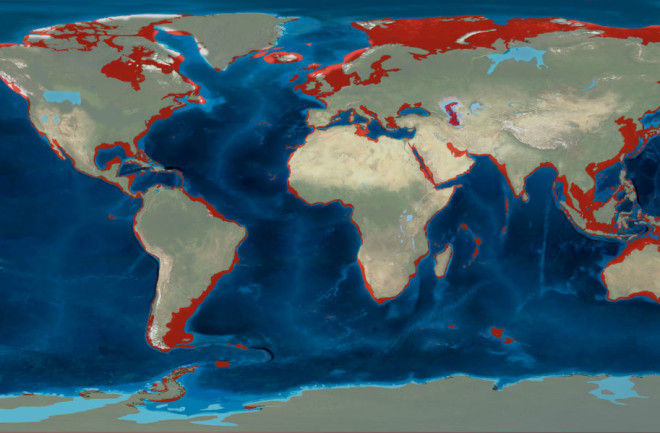Whatever you learned in school about how our species spread across the planet is wrong.
For decades, textbooks taught that humans left our ancestral African homeland and spread across the world via the landmasses we know today, reaching Australia less than 50,000 years ago and the Americas a mere 13,500 years ago. But there’s a continent-sized gap in our knowledge about our collective past that scientists are only now starting to fill in.
From the North Sea to the island-dotted tropics between Asia and Australia, from the frigid waters of the Bering Strait to the sunny Arabian Peninsula, now-submerged coastal landscapes were exposed and accessible to our ancestors at multiple times in prehistory, including key periods of human expansion across the globe. The square mileage of these areas now under the seas is equal to that of modern North America.
“My own view is that there are certainly sites out there,” says University of York archaeologist Geoff Bailey. “Some of the areas [that would have been] most attractive to humans are now underwater.”
Long out of scientists’ reach, these submerged landscapes, which some researchers collectively call Aquaterra, are finally emerging from beneath the waves — at least figuratively. Thanks to cutting-edge technologies and increasing evidence that the old models of early human dispersal no longer make sense, several projects are underway to reconstruct these ancient worlds and search for evidence that will likely rewrite the human story.

